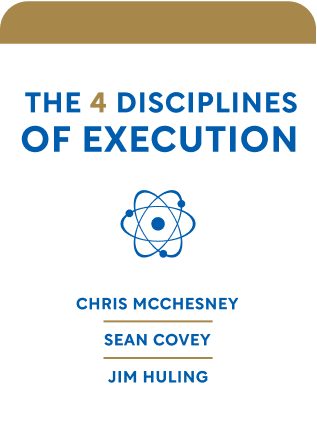

This article is an excerpt from the Shortform book guide to "The 4 Disciplines of Execution" by Chris McChesney, Sean Covey, and Jim Huling. Shortform has the world's best summaries and analyses of books you should be reading.
Like this article? Sign up for a free trial here .
What is gamification? What are some examples of gamification in the workplace?
Gamification is the practice of using gaming elements such as scores, leaderboards, and achievement badges to make work more engaging. In their book The 4 Disciplines of Execution, Chris McChesney, Jim Huling, and Sean Covey suggest using a scoreboard to gamify workplace dynamics and improve team engagement.
Here’s how to use gamification in the workplace.
Discipline 3: Engagement
In Discipline 3, the authors tell you to engage your team by making the 4 Disciplines into a game that they can win. You already did some engagement work in the previous two disciplines by consulting your team members about the team goal and lead measures. When people choose their own goals and feel ownership, they’re more engaged. They’re also more engaged when they enter a competition their team can win—humans have a natural urge to compete and love to win.
McChesney, Huling, and Covey suggest designing a scoreboard to go with the game; better yet, have your employees design and create it. This scoreboard must tell your team if they’re winning (if they’re on track to meet the goal), and it’s a constant reminder of the game you’re all trying to win. For example, the scoreboard might be a graph with two lines: one that goes from your starting situation to your desired situation over the time allotted (as stated in Discipline 1) and another that shows your actual progress toward that goal.
The authors recommend creating a separate visual for your effort measurement—perhaps a chart where each team member tracks what they’ve accomplished so far that week.
| Counterpoint: Gamification Is Unproven Gamification started with the observation that gamers will happily spend hours doing repetitive tasks—superficially similar to what they might do at work—with no tangible reward. If managers and executives could make work similarly enjoyable by applying gaming elements, the theory goes, they’d reap benefits in employee morale and productivity—the workers would be happier and the company would be more profitable, creating a win-win situation. Unfortunately, gamification has had underwhelming results. Common criticisms of gamification in the workplace include: It’s a new name for old ideas. Employee competition and leaderboards are hardly new ideas (for example, “Employee of the Month” awards existed long before gamification). It can feel condescending. Employees work for money; trying to boost engagement with prizes and badges can feel like you’re trying to win them over with cheap gimmicks instead of increased wages. It misses the point. Gamers play games because they’re fun. Applying gaming mechanics to something that isn’t inherently fun won’t get people engaged, so gamification is doomed to fail. |

———End of Preview———
Like what you just read? Read the rest of the world's best book summary and analysis of Chris McChesney, Sean Covey, and Jim Huling's "The 4 Disciplines of Execution" at Shortform .
Here's what you'll find in our full The 4 Disciplines of Execution summary :
- The 4 disciplines that can make any strategy a successful reality
- Why a great plan falls apart when you don't think adequately about execution
- The 6 steps you need to scale the 4DX model across an entire organization






